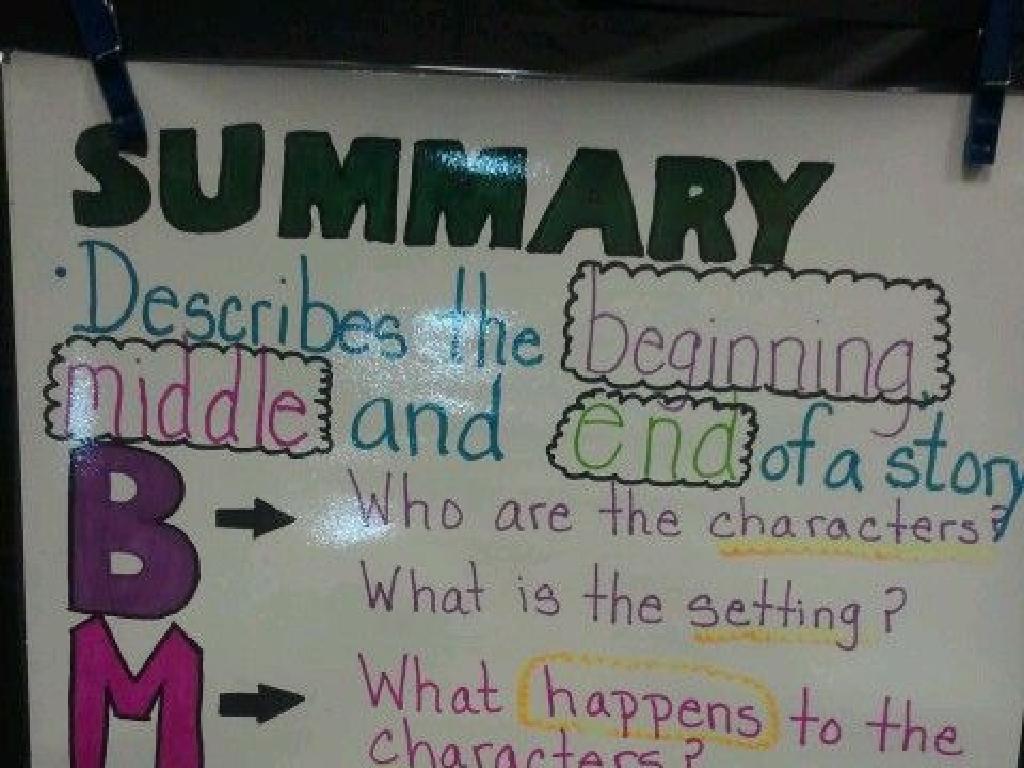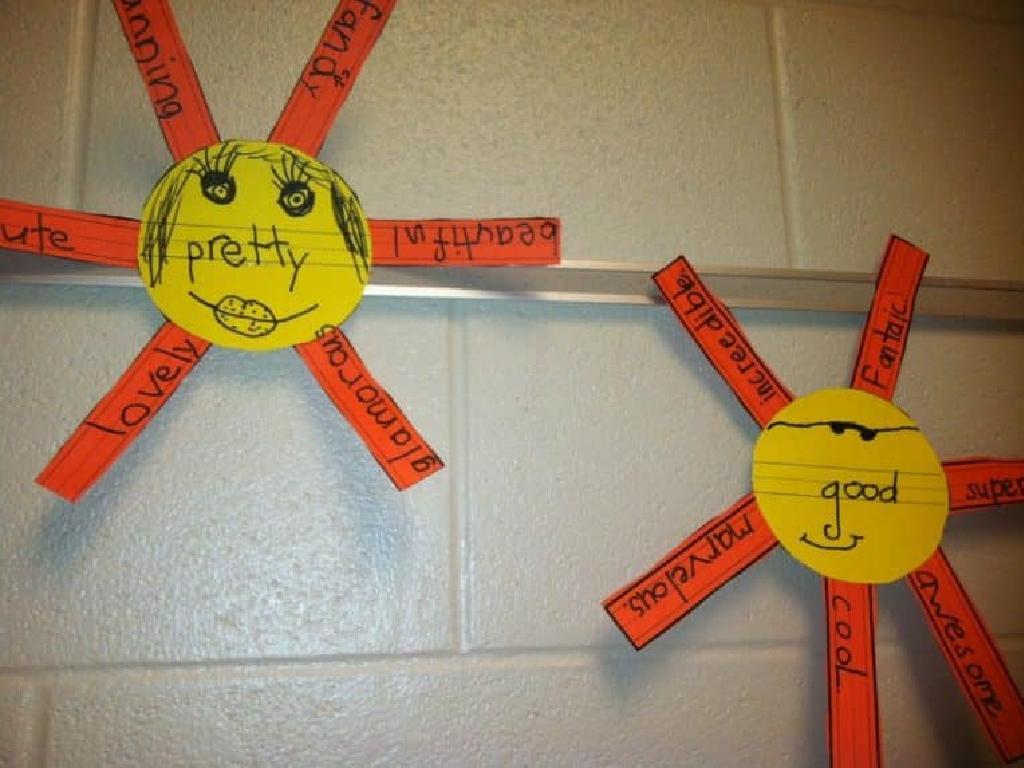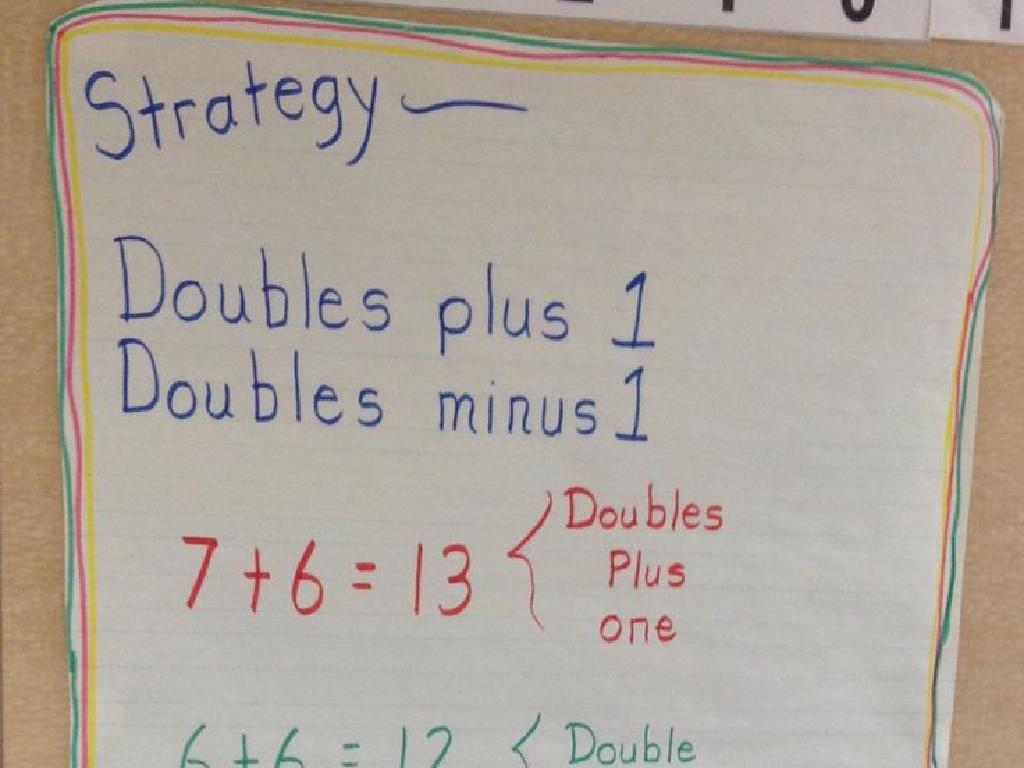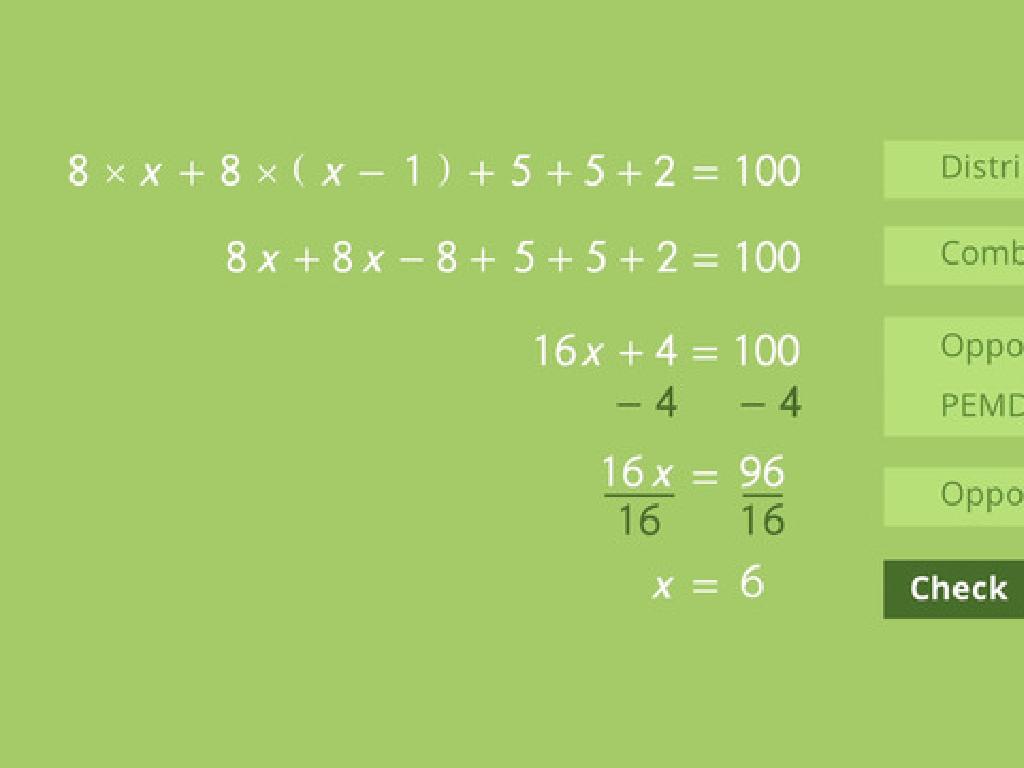Identify Multiple Materials In Objects
Subject: Science
Grade: First grade
Topic: Materials
Please LOG IN to download the presentation. Access is available to registered users only.
View More Content
Exploring Materials in Our World
– Learning about materials
– What are materials? Things like metal, plastic, and wood.
– Objects and their materials
– Your toy might be plastic, your pencil is wood!
– Materials are everywhere
– Look around, what do you see? Is it cloth, glass, or maybe rubber?
– Fun material discovery
|
This slide introduces the concept of materials to first graders, sparking curiosity about the composition of everyday objects. Begin by explaining what materials are, using simple terms and relatable examples. Encourage the students to think about what their own belongings are made of, such as toys, utensils, or furniture. Highlight that materials like metal, plastic, wood, cloth, and glass are common and can be found all around them. Engage the class by asking them to name objects and guess the materials they are made from. This activity will help them to start observing and thinking about the role of different materials in their environment.
Exploring Materials Around Us
– Understanding materials
– Materials are substances objects are made of.
– Common materials we see
– Wood, plastic, metal, glass, and fabric are everywhere.
– Materials make our things
– Each object we use is made from one or more materials.
– Why materials matter
– Different materials have different uses and properties.
|
This slide introduces the concept of materials to first-grade students. Begin by explaining that everything they can touch is made out of some material. Give examples of common materials such as wood (like their pencil or a tree), plastic (like their lunchbox), metal (like a spoon), glass (like a window), and fabric (like their clothes). Discuss how different materials are used for different purposes because of their properties; for example, glass is used for windows because we can see through it, and metal is used for spoons because it is hard and can be cleaned easily. Encourage the students to think about what materials their favorite things are made from and why those materials are suitable for the purpose.
Exploring Everyday Objects
– Look at daily use objects
– Guess the materials used
– Is your pencil made of wood or plastic?
– Single or multiple materials?
– Your water bottle might be metal, plastic, or glass
– Discuss material properties
– Why are some objects soft and others hard?
|
This slide is aimed at sparking curiosity in first graders about the materials that make up the objects they use every day. Encourage the students to pick up objects around them and guess what materials they are made from. Discuss how some objects are made from just one material while others are a combination, like a pencil with wood and graphite, or a jacket with fabric and plastic zippers. Use this opportunity to introduce basic material properties such as hard, soft, flexible, and rigid, and how the choice of material affects the object’s function. For the activity, students can bring an object from home and discuss the materials it’s made from in the next class.
Material Match-Up Game
– Match objects to their materials
– Is a water bottle plastic or wood?
– Think about what water bottles are usually made from
– Determine a pencil’s material
– Pencils can be wooden or have a metal part; which is it?
– Discuss materials of everyday items
|
This slide introduces a class activity where students will engage in a game to match common objects with the materials they are made from. This activity helps students understand that objects are made from different materials and that these materials have specific properties. For the water bottle, guide the students to think about the properties of plastic and wood and decide which material is more likely to be used. For the pencil, discuss the parts of a pencil and what materials they are made from. Encourage the students to think about other everyday items and what materials they could be made of. This will help them to start observing and identifying materials in the world around them.
Why Materials Matter
– Materials have unique properties
– Materials like wood or metal have different feels and uses.
– Comparing hard and soft materials
– Soft materials like cotton, hard like rock.
– Bendable versus breakable materials
– Rubber bands bend, glass can shatter.
– Importance of material properties
|
This slide introduces the concept that different materials have different properties and why these properties are important. Explain that materials are all around us and each has its own purpose based on its properties. For example, wood is hard and used to build, while cotton is soft and used for clothing. Some materials can bend without breaking, like rubber, which is why we use it for bands. Others, like glass, can break easily, so we must handle them carefully. Understanding these properties helps us choose the right material for the right job. Encourage students to think of and discuss examples of hard, soft, bendable, and breakable materials in their everyday lives.
Class Activity: Material Hunt
– Explore the classroom on a material hunt
– Find objects and identify their materials
– Discuss your findings with the class
– Explain why you think they’re made of those materials
|
This activity is designed to help students understand that objects are made from different materials. Set up stations around the classroom with various objects such as a wooden block, a metal spoon, a plastic toy, and a cotton cloth. Encourage the students to touch and feel each object, and guide them to identify the material it is made from. Ask them to consider properties like texture, hardness, and color. After the hunt, facilitate a discussion where each student shares their findings and explains their reasoning. Possible activities: 1) Sorting objects based on the material, 2) Matching objects to their material names, 3) A guessing game where students feel objects in a bag and guess the material, 4) Creating a chart of objects and their materials, 5) Drawing pictures of objects with labels of their materials.
Show and Tell: Material Discovery
– Share your material findings
– Describe the material’s use
– Explain why it’s used for the object
– Is it because it’s strong, flexible, or waterproof?
– Learn from classmates’ discoveries
|
This slide is for a class activity where students will present the materials they found during a previous ‘material hunt’ exercise. Encourage them to think about the properties of the material and why those properties make the material suitable for the object they found it in. For example, glass is used for windows because it’s transparent and hard. Rubber might be used for boots because it’s waterproof and flexible. This activity will help students understand the practical application of materials in everyday objects and enhance their public speaking skills. Prepare to facilitate the discussion and ensure each student gets a chance to present their findings.
Materials Discovery Recap
– Congratulations on learning materials!
– Materials form our everyday objects.
– Everything is made from materials like wood, plastic, metal, etc.
– Keep exploring and questioning.
– Always be curious about what things are made of.
– What materials can you find at home?
– Try to identify materials in your toys, furniture, or clothes.
|
This slide is meant to congratulate the students on their hard work in learning about materials and to encourage them to continue their exploration outside of the classroom. It’s important to reinforce the concept that materials are the substances things are made from and that by looking closely, they can identify these materials in their daily lives. Encourage them to touch, feel, and ask questions about the objects they encounter to satisfy their curiosity and enhance their understanding of the world around them. This will help solidify their learning and foster a spirit of inquiry.






